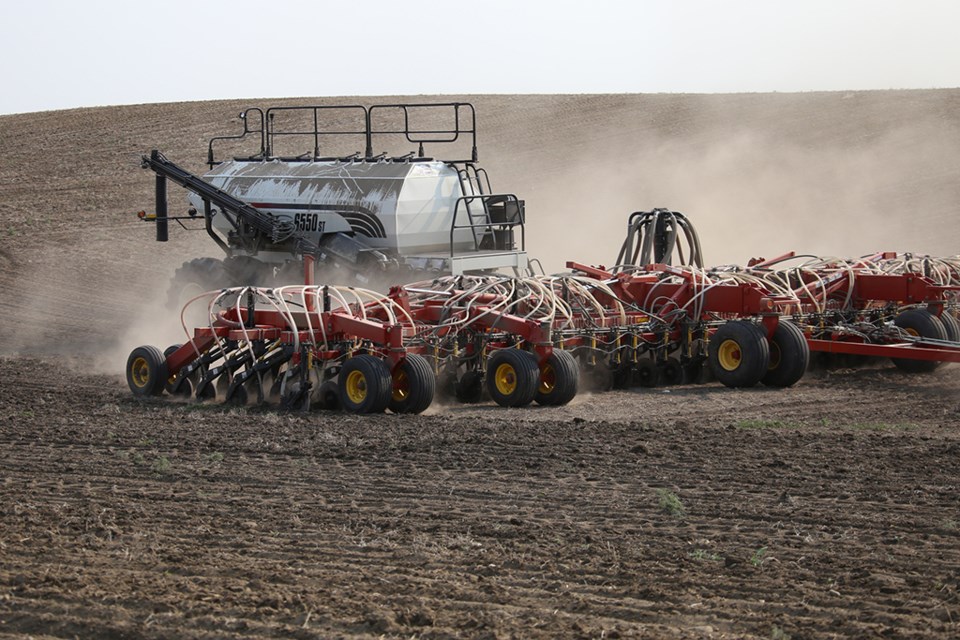UNITY - Seeding is progressing rapidly in the region, according to the crop report for the period of May 16 to 22, 2023. Many producers have completed their operations and have started other field work. Seeding now sits at 81 per cent, up from 54 per cent last week and is ahead the five-year average of 78 per cent. Now that seeding is near complete in the region, producers are hoping for a long soaking rain. Some crops have emerged, while others, especially canola and other shallow seeded crops, have had poor emergence due to the dry conditions.
There were scattered rain showers in the region over the past week, but very few areas received sufficient moisture to alleviate the pressure of the dry conditions. The Rosetown area reported the highest amount of rain in the region with 21 mm, the Wilkie area 13 mm and the Cando area 10 mm. Some producers are in desperate need of moisture and may hold off seeding any more canola until a rain shower occurs.
Topsoil moisture for the region continues to fall with the constant wind and warm weather drying out soil. Cropland topsoil moisture rated as 41 per cent adequate, 49 per cent short and 10 per cent very short. Hay and pasture land topsoil moisture is rated as 26 per cent adequate, 52 per cent short and 22 per cent very short.
Dry soil conditions have slowed pasture and hay land growth. Producers have indicated that significant rains will be needed to improve pastures to a point where cattle can graze them all summer. Pasture conditions are rated as 20 per cent good, 35 per cent fair, 27 per cent poor and 18 per cent very poor.
Due to the overly dry conditions, crops are rated as normal to behind in their developmental stage for this time of year. Fall and spring cereals are rated the highest for normal development while crops like canola are suffering from the dry growing conditions. Most of the crop damage this week is due to strong wings, light frost and limited moisture. Producers are busy applying pest control products when the weather allows.




